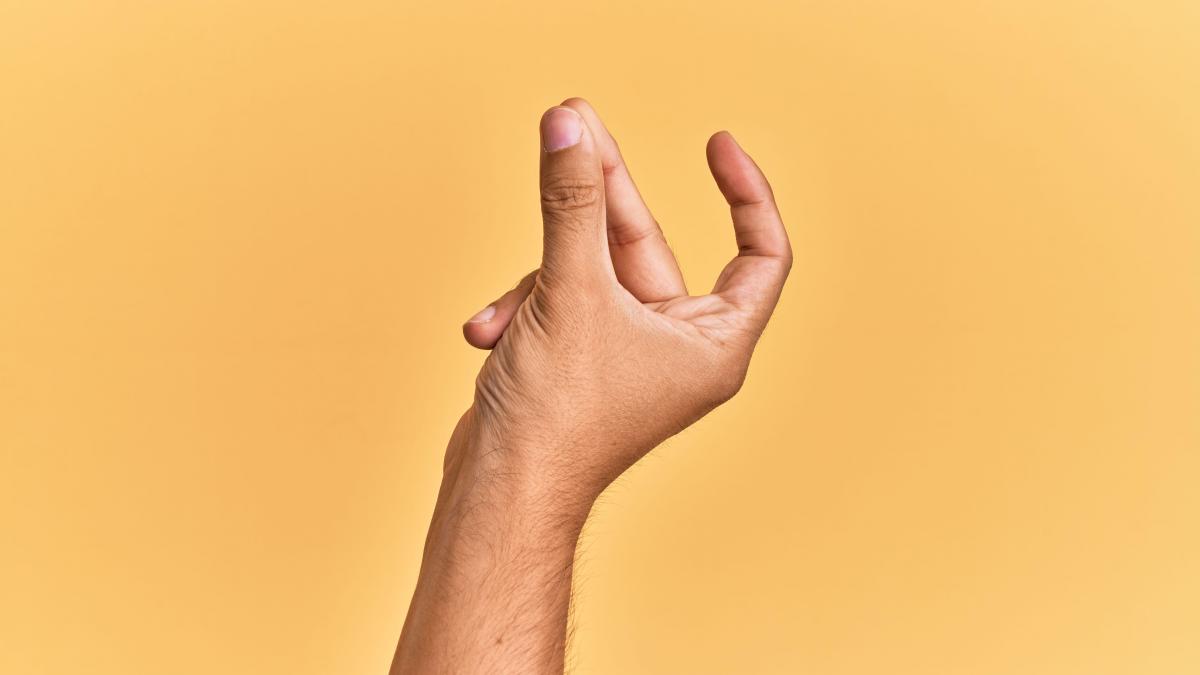The study reveals why Thanos’ famous snap would’ve been impossible.

In Marvel’s “Avengers: Infinity War,” supervillain Thanos uses a simple gesture — a snap of a finger — to destroy half of all life in the universe. But the mass-murdering comic book character not only would have failed to wreak devastation; he wouldn’t have even been able to snap his fingers, according to a new study.
Using high-speed cameras and state-of-the-art force sensors, researchers at the Georgia Institute of Technology measured the speed and acceleration of finger snapping and studied the little-known physics that makes it possible. They found that a finger snap is the fastest acceleration of the human body ever measured — and that the physics involved would have made it impossible for Thanos to perform the apocalyptic gesture, at least while he was wearing his metal “Infinity Gauntlet.”
Their results, published Nov. 17 in the Journal of the Royal Society Interface, show that the maximal rotational velocities of the finger snap are 7,800 degrees per second and the maximal rotational acceleration is 1.6 million degrees per second squared — a blistering three times the acceleration produced by a professional baseball player’s arm.
“When I first saw the data, I jumped out of my chair,” study senior author Saad Bhamla, an assistant professor of chemical and biomolecular engineering at the Georgia Institute of Technology, said in a statement. “The finger snap occurs in only seven milliseconds — more than 20 times faster than the blink of an eye, which takes more than 150 milliseconds.”
Bhamla said the inspiration for the research came from an argument he had with his students after watching the 2018 Marvel Studios movie “Avengers: Infinity War,” in which Thanos, an 8-foot (2.4 meter) purple warlord from Saturn’s moon Titan, seeks out six powerful “Infinity Stones” that will grant him the ability to bend and reshape the fabric of the universe according to his will. By placing the stones inside a metal “Infinity Gauntlet,” Thanos planned to wipe out half of all the living creatures in the universe with a mere snap of his fingers.
But for some of the scientists, performing a finger snap while wearing a metal gauntlet was the step too far.
“We got into this heated debate, trying to understand if he could actually snap or not,” Bhamla said. “This is how this whole thing got started, because we want to figure out the key ingredients required to snap our fingers.”
To investigate the physics behind the gesture, the team analyzed a number of finger snaps with a high-speed camera while covering the snapping hand with a variety of materials. By fitting their experimental observations to an assortment of mathematical models, they found the best physical explanation for how snaps come about and their most fundamental component: friction.
According to the study, finger snaps work by using the arm muscles as a motor to load spring-like tendons in the fingers and arms with elastic potential energy, which is then released quickly to generate the incredible acceleration of the snap. Friction between the thumb and middle finger plays the vital role of a latch by wedging the middle finger to the thumb and preventing it from moving. Once sufficient energy has been built up, the friction is overcome and the thumb and middle finger slide past each other, unleashing the snap.
The amount of friction needed to make a snap work exists inside a “Goldilocks zone” — too little friction and not enough energy is stored in the tendons, and too much friction and more of the stored energy is dissipated as heat instead of motion, the researchers said.
Of course, the researchers didn’t have a working Infinity Gauntlet, so they did the next-closest thing: covered the fingertips of their subjects with metal thimbles. They found that Thanos’s gauntlet was as ruinous to an effective finger snap as a rubber glove — the glove because it provided too much friction, dissipating too much of the snap as heat; and the rigid gauntlet because it offers too little, never allowing the snap to sufficiently build up in the first place. The metal armor around Thanos’s snap-happy fingers would also not be as compressible as skin, making the contact area for the snap much smaller.
“Our results suggest that Thanos could not have snapped because of his metal armored fingers,” first author Raghav Acharya, an undergraduate student at the Georgia Institute of Technology, said in the statement. “So, it’s probably the Hollywood special effects, rather than actual physics, at play!”
The new model for finger snapping may have applications for understanding other biomechanical behaviors, such as how ants and termites store up energy to snap their mandibles, the researchers said. It could also inform the design of high-tech prosthetic hands and inspire other researchers to investigate the anthropological reasons behind human finger snapping.
Advertisement
“Based on ancient Greek art from 300 B.C., humans may very well have been snapping their fingers for hundreds of thousands of years before that, yet we are only now beginning to scientifically study it,” Bhamla said. “This is the only scientific project in my lab in which we could snap our fingers and get data.”





















